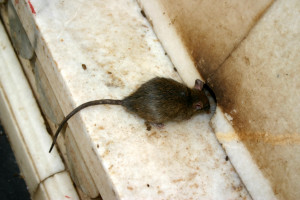 Rat or Rodent urine is responsible for the spread of leptospirosis, which can result in liver and kidney damage. It can also be contracted through handling or inhalation of scat. Complications include renal and liver failure, as well as cardiovascular problems. Also, rodent bites and scratches can result in disease and rat-bite fever.
Rat or Rodent urine is responsible for the spread of leptospirosis, which can result in liver and kidney damage. It can also be contracted through handling or inhalation of scat. Complications include renal and liver failure, as well as cardiovascular problems. Also, rodent bites and scratches can result in disease and rat-bite fever.
A viral infectious disease called Lymphocytic choriomeningitis (LCMV), is transmitted through the saliva and urine of rats. Some individuals experience long-term effects of lymphocytic choriomeningitis, while others experience only discomfort for a short period of time.
One of the most historically dangerous rat-borne diseases is the bubonic plague, also called “Black Plague,” and its variants. Transfer occurs when fleas from the rat bite human beings. Fleas transported on rats are considered responsible for this plague during the Middle Ages, which killed millions. From the transmission of bubonic plague to typhus and hantavirus, rat infestations can prove harmful to human health.
Rats also are a potential source of allergens. Their droppings, dander and shed hair can cause people to sneeze and experience other allergic reactions.
The diseases transmitted by rats fall into one of two categories: the diseases transmitted directly from exposure to rat-infected feces, urine or bites and the diseases indirectly transmitted to people by an intermediate arthropod vector such as fleas, ticks or mites.
Diseases Directly Transmitted by Rats are:
Hantavirus Pulmonary Syndrome. This is a viral disease that is transmitted by the rice rat. This disease is spread in one of three ways: inhaling dust that is contaminated with rat urine or droppings, direct contact with rat feces or urine, and infrequently due to the bite of a rat.
Salmonellosis. Consuming food or water that is contaminated by rat feces bacteria can cause this disease.
Leptospirosis. This is a bacterial disease that can be transmitted by coming into contact with infected water by swimming, wading or kayaking or by contaminated drinking water.
Individuals may be at increased risk of Leptospirosis infections if they work outdoors or with animals.
Rat-bite Fever. This disease may be transmitted through a bite, scratch or contact with a dead rat.
Diseases Indirectly Transmitted by Rats include:
Plague. This disease is carried by rats and transmitted by fleas in the process of taking a blood meal. Domestic rats are the most common reservoir of plague.
Colorado Tick Fever. This is a viral disease that is transmitted by the bite of a tick that has taken a blood meal from a bushy-tailed woodrat.
Cutaneous Leishmaniasis. This disease is a parasite that is transmitted to a person by the bite of an infected sand fly that has fed on a wild woodrat.
Hantavirus. Some species of rats such as the cotton rat or rice rat are known carriers of hantavirus. Norway rats and roof rats are not known transmitters of hantavirus. Victims may be debilitated and can experience difficulty breathing. Hantavirus is transmitted to humans when they inhale airborne particles from rodent droppings, urine or carcasses that have been disturbed.
Please note that the first symptoms of the virus can be mistaken for the flu. Patients then suffer breathing difficulties that may prove fatal if not treated effectively and immediately.
In order to avoid hantavirus, all mouse feces, nest materials and dead rodents must be removed from the home. Spray suspected areas thoroughly with disinfectant before sweeping to avoid having anything become airborne. Use gloves to handle rodent carcasses or droppings and a respirator must be worn with functioning cartridges. Buildings should be aired out following an infestation. Not all rodents have been found to carry hantavirus. Deer mice, cotton rats, rice rats and white-footed mice are the most common transmitters.

 There is a big misconception that bed bugs are the result of poor sanitation and/or poverty. The truth is this; bed bugs do not discriminate based on one’s social status or the cleanliness of their home. Cleanliness has nothing to do with getting bed bugs as infestations can occur in the most expensive hotels, multi-million dollar estates as well as homeless shelters and everything in between, regardless of the existing sanitary conditions.
There is a big misconception that bed bugs are the result of poor sanitation and/or poverty. The truth is this; bed bugs do not discriminate based on one’s social status or the cleanliness of their home. Cleanliness has nothing to do with getting bed bugs as infestations can occur in the most expensive hotels, multi-million dollar estates as well as homeless shelters and everything in between, regardless of the existing sanitary conditions.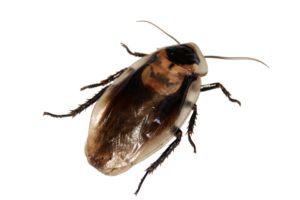 Cockroaches are omnivores that eat plants and meat. They have been recorded to eat human flesh of both the living and the dead, although they are more likely to take a bite of fingernails, eyelashes, feet and hands. The bites may cause irritation, lesions and swelling. Some have suffered from minor wound infections.
Cockroaches are omnivores that eat plants and meat. They have been recorded to eat human flesh of both the living and the dead, although they are more likely to take a bite of fingernails, eyelashes, feet and hands. The bites may cause irritation, lesions and swelling. Some have suffered from minor wound infections.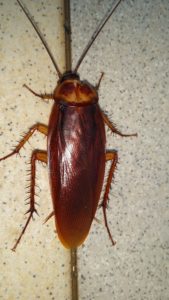 Cockroaches prefer to live and feed in the dark and they are nocturnal, so a cockroach seen during the day is a possible sign of infestation. Cockroaches tend to prefer dark, moist places to hide and breed and can be found behind refrigerators, sinks and stoves, as well as under floor drains and inside of motors and major appliances. Because they can flatten their bodies to fit into narrow areas, cockroaches may also be found hiding beneath rubber mats, behind wallpaper and within wall cracks.
Cockroaches prefer to live and feed in the dark and they are nocturnal, so a cockroach seen during the day is a possible sign of infestation. Cockroaches tend to prefer dark, moist places to hide and breed and can be found behind refrigerators, sinks and stoves, as well as under floor drains and inside of motors and major appliances. Because they can flatten their bodies to fit into narrow areas, cockroaches may also be found hiding beneath rubber mats, behind wallpaper and within wall cracks.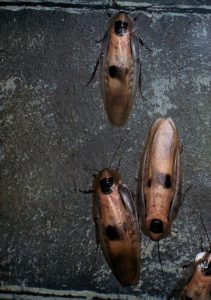 Whether you like it or not, homes and business properties are ideal breeding grounds for certain species of cockroaches. With plenty of food, warmth, water and nesting sites, these formidable pests can remain active all year round. It is much easier to prevent roaches than to get rid of them. Preventing them all comes down to proper sanitation. Clean homes and businesses can become infested if small sanitation steps are missed.
Whether you like it or not, homes and business properties are ideal breeding grounds for certain species of cockroaches. With plenty of food, warmth, water and nesting sites, these formidable pests can remain active all year round. It is much easier to prevent roaches than to get rid of them. Preventing them all comes down to proper sanitation. Clean homes and businesses can become infested if small sanitation steps are missed.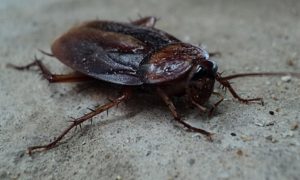 Here are quick facts about cockroaches: There are more than 3,500 identified species of cockroaches, with many more species yet to be discovered. Most roaches are tropical in distribution – occupying a variety of habitats in rainforests and other moist, warm locales. A total of about 69 species inhabits the United States. Of those, about two-thirds are not native to this country. While that may sound like a lot, only about 10 species are considered household pests.
Here are quick facts about cockroaches: There are more than 3,500 identified species of cockroaches, with many more species yet to be discovered. Most roaches are tropical in distribution – occupying a variety of habitats in rainforests and other moist, warm locales. A total of about 69 species inhabits the United States. Of those, about two-thirds are not native to this country. While that may sound like a lot, only about 10 species are considered household pests.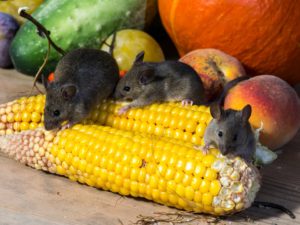 When not well trained, mice can be one of the most erratic rodents in the planet; they invade humans and property carelessly, and this carelessness they extend towards their nourishment also, hence it cannot be said that mice feed on a certain type of food for nourishment. Mice eat a wide assortment of food. They have insatiable longings and will eat just about anything. They are genuine omnivorous foragers, however for the most part incline toward grain, domesticated animals food, and meat. Mice have likewise been known to eat soap, leather, furs, candy, milk, meat, vegetables, poultry, eggs, grain, seeds, fruit, nuts, calfskin, hides, treat, milk, meat, vegetables, poultry, eggs, grain, seeds, natural product, nuts, snails and different rodents. A rodent can eat 33% of its body weight every day. The rodent’s primary source of nourishment is water, as it can’t survive long without it. Mice need 1/2 to 1 ounce of water every day.
When not well trained, mice can be one of the most erratic rodents in the planet; they invade humans and property carelessly, and this carelessness they extend towards their nourishment also, hence it cannot be said that mice feed on a certain type of food for nourishment. Mice eat a wide assortment of food. They have insatiable longings and will eat just about anything. They are genuine omnivorous foragers, however for the most part incline toward grain, domesticated animals food, and meat. Mice have likewise been known to eat soap, leather, furs, candy, milk, meat, vegetables, poultry, eggs, grain, seeds, fruit, nuts, calfskin, hides, treat, milk, meat, vegetables, poultry, eggs, grain, seeds, natural product, nuts, snails and different rodents. A rodent can eat 33% of its body weight every day. The rodent’s primary source of nourishment is water, as it can’t survive long without it. Mice need 1/2 to 1 ounce of water every day.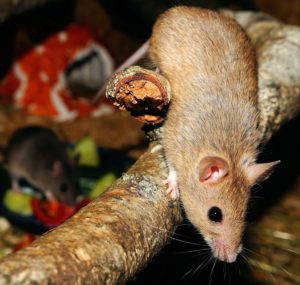 As indicated by the Centers for Disease Control and Prevention, viruses like the hantavirus pneumonic disorder are regularly spread to people through bites from the deer mouse, cotton mice, rice mice and white-footed mice. Regardless of mainstream thinking, as indicated by ND Health, little rodents, for example, mice seldom spread rabies to people through gnawing. Most times for mice to chomp people incorporate when the mouse accesses a person’s home.
As indicated by the Centers for Disease Control and Prevention, viruses like the hantavirus pneumonic disorder are regularly spread to people through bites from the deer mouse, cotton mice, rice mice and white-footed mice. Regardless of mainstream thinking, as indicated by ND Health, little rodents, for example, mice seldom spread rabies to people through gnawing. Most times for mice to chomp people incorporate when the mouse accesses a person’s home. As the tides ride on we usually begin to see the need to improve our living condition; maybe more space, more warmth, a little coziness. Though it is a good thing to treat your home to a nice touch every now and then, however in the process we tend to attract unwanted housemates, the mice.
As the tides ride on we usually begin to see the need to improve our living condition; maybe more space, more warmth, a little coziness. Though it is a good thing to treat your home to a nice touch every now and then, however in the process we tend to attract unwanted housemates, the mice.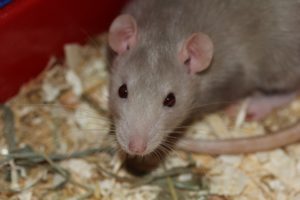 Mice are very efficient breeders; they attain sexual maturity at just five weeks old into their life. Unlike the human race, mice do not recognize the concept of incest, hence wherever a male and a female meet sexual intercourse will most likely occur and considering the population of mice; both male and female out there, that’s like mice engaging in intercourse every 2 days in a week.
Mice are very efficient breeders; they attain sexual maturity at just five weeks old into their life. Unlike the human race, mice do not recognize the concept of incest, hence wherever a male and a female meet sexual intercourse will most likely occur and considering the population of mice; both male and female out there, that’s like mice engaging in intercourse every 2 days in a week.